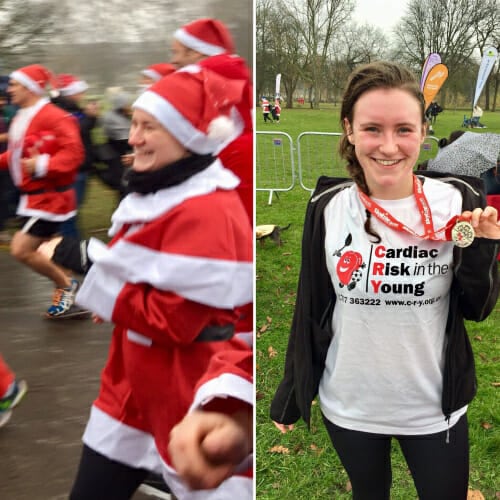I feel like me again by Nicole McShane

12 years ago, last year, last week or even yesterday; it doesn’t matter how long ago it was when they died of an undiagnosed genetic heart condition, unfortunately, they’re still not here today and the pain of losing them most likely won’t have subsided. However as time moves on, you’ll remember what it feels like […]
Rob Jackson
Living with arrhythmogenic right ventricular cardiomyopathy (ARVC) I am a 31 year old Sergeant in the Army Air Corps and until recently was a Lynx Helicopter pilot and aircraft commander operating in Northern Ireland. I joined the Army at 18 and have spent the past 12 years living an active, healthy lifestyle as a soldier. […]
Hayley Brown
Living with long QT syndrome I was 19 years old and had just failed my second driving test when my first and only attack happened. I ran through the garden and into the house where my mum was waiting nervously. I told her that I had failed and then went on to tell her I […]
Julia Hubbard
Living with right ventricular outflow tract ventricular tachycardia (RVOT-VT) I have represented Great Britain in Bobsleigh since 2006 and In October 2007 I crashed in a race and sustained fractured vertebrae and tore all the ligaments in my thoracic spine. I was out of the sport for the rest of the season while I recovered […]
Electrocardiogram (ECG)
This test involves taping electrical leads onto your legs, arms and chest to take readings of the electrical activity of your heart. These are printed out onto a piece of paper for the doctor to examine. The test is quick and completely painless. Watch Cardiac Risk in the Young Patron David Walliams have an ECG
Exercise test (also called an exercise ECG)
This test is the same as the ECG but is recorded before, during and after a period of time spent exercising on a treadmill or an exercise bike. This allows the doctor to examine any changes in the electrical patterns that occur with exercise, and analyse any abnormalities. This test is particularly useful in detecting […]
Arrhythmogenic right ventricular cardiomyopathy (ARVC)
The incidence of arrhythmogenic right ventricular cardiomyopathy (ARVC) is now thought to be higher than previously believed (affecting 1 in every 1000 individuals), due to the availability of better diagnostic techniques and general awareness of the disorder amongst the medical profession. ARVC was first recognised in the late 1970’s. It is anticipated that even more information regarding ARVC will be available in the coming years, to help us understand the natural history of the condition.
Dilated cardiomyopathy (DCM)
In dilated cardiomyopathy (DCM) the main pumping chambers of the heart are dilated and contract poorly. This results in a reduced volume of blood (low output) pumped around the body which fails to meet the body’s demand and features of what is commonly known as heart failure. There is a build up of fluid in […]
Hypertrophic cardiomyopathy (HCM)
Read personal stories from myheart members with hypertrophic cardiomyopathy here. Hypertrophic cardiomyopathy (HCM) is a condition where the heart muscle becomes thickened. Traditionally, the term HCM was used for disease caused by abnormalities in genes which make the proteins responsible for contraction of the heart (sarcomeric contractile proteins). More recently the definition of HCM has […]
Long QT syndrome (LQTS)
Long QT syndrome (LQTS) is an ion channelopathy. Ion channelopathies (also sometimes referred to as arrhythmia syndromes or cardiac channelopathies)affect the electrical functioning of the heart without affecting the heart’s structure. They are a group of rare genetic conditions that are caused by abnormalities of the DNA known as mutations. They are usually inherited from parents although they can occur for the first time in a person. (If they occur for the first time they are described as sporadic.)
